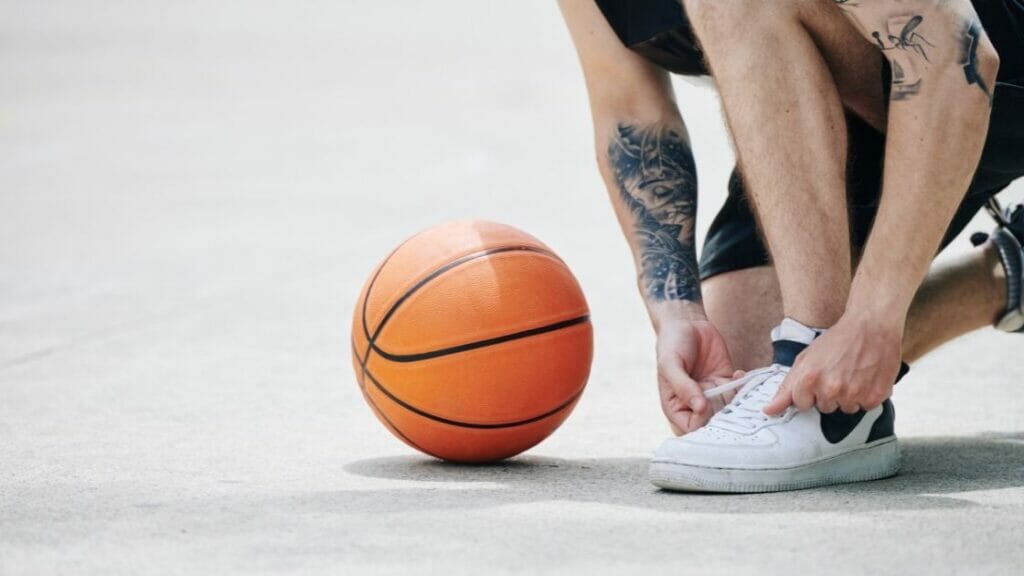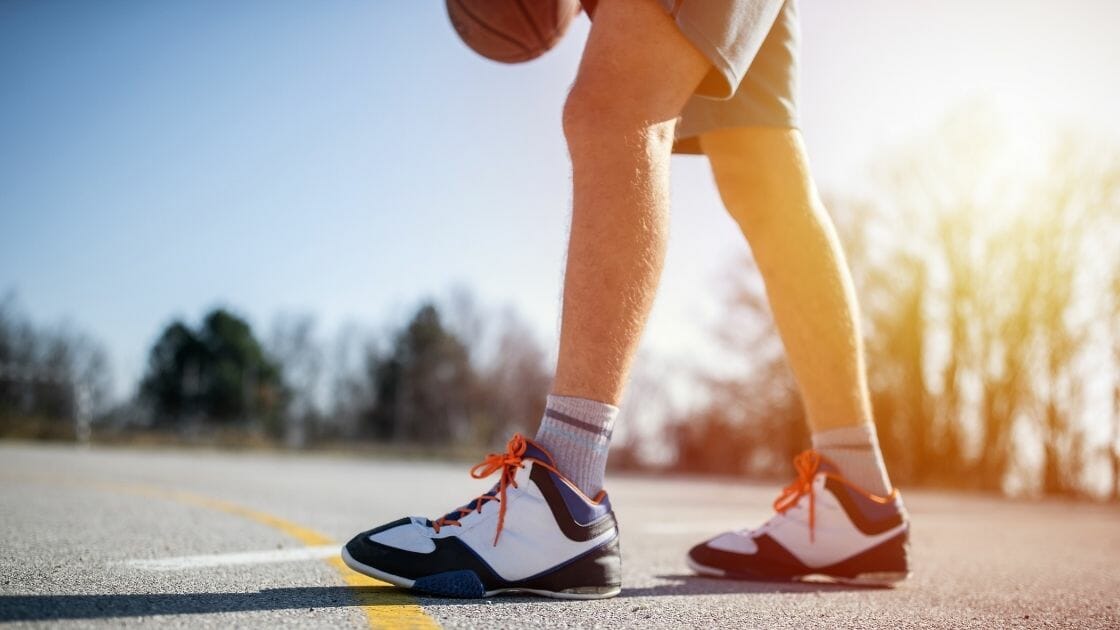As you know, the game of basketball requires a lot of running. If your shoes are too tight, they can cause blisters and other painful irritations. It is important to choose the right size shoe to avoid these problems.
The question of how to choose the right size for your shoes is a common one.
The statement isn’t as simple as it seems, especially when you’re on the court. If you have wide feet, are new to basketball, or are just unsure what size would work best for you, go with a shoe that’s one size up from your normal shoe size. This way, you’ll avoid any discomfort and potential injuries!
“The best way to determine your shoe size is by measuring your foot in centimetres or inches.” “If you’re not sure what size you wear, it’s better to get one that’s slightly bigger than too small.”
Should Basketball Shoes Be a Size Bigger is a question that many people have when they are trying to make a purchase. While it may not be a bad idea in some cases, the answer is actually no. It’s important to understand why you should stick to this rule and how it can help prevent injury, damage or other issues from occurring.
No matter what size shoe you wear, it’s important to make sure it’s comfortable. Wearing shoes that are too tight can cause blisters and other painful irritations, so it’s always best to go with a size that’s a little bit bigger. By following these tips, you’ll be able to find the perfect pair of shoes for you. Thanks for reading!
Basketball is a sport that requires a lot of running, so it’s important to be comfortable when you’re on the court. Wearing shoes that are too tight can cause blisters and other painful irritations. For this reason, go with a bigger size than what you usually wear.
Table of Contents
Why Basketball Shoe Fit Is Important
The importance of fit in basketball shoes cannot be overemphasized. They need to be snug so that you have the best control over the ball and your feet are stable when making sudden direction changes. Ill-fitting shoes can also cause ankle injuries.
Your shoe size may vary depending on the type of sneaker you wear. For example, if you’re a Nike Air fan and wear size 7 in those, you’ll probably need an eight or even 9 in Adidas.

The best way to determine your shoe size is by measuring your foot in centimeters or inches. You can also refer to the sizing information on the box before making a purchase. If you’re not sure what size you wear, it’s better to get one that’s slightly bigger than too small.
Lastly, have a professional fit you when in doubt. If you’ve been shopping in the same store for a while or have a favorite brand that always makes you happy, then go ahead and ask a clerk to help you with sizing.
How To Size Basketball Shoes
If you enjoy playing basketball, it’s important to make sure your shoes fit well. The wrong size can lead to blisters and discomfort during play. Before getting fitted for new shoes, there are a few things you will want to know about sizing. This blog post provides information on how the shoe sizes correspond to the foot length and other tips on ensuring that you get the right size for your feet!
When it comes to basketball shoes, sizing can be a bit tricky. Different brands have different sizing charts, so it’s important to measure your feet accurately and use the size chart to find the right shoe.
Shoe Size
So, what does your shoe size mean? Well, it’s slightly more complicated than you would think. While your “size” corresponds to the length of your foot, the width is not indicated anywhere on the box or within product information (however, some companies and retailers offer shoe width information). For this reason, it is important to know both your foot length and width when shopping for basketball shoes.
Basketball Shoes Size Chart
Here is an example of a typical shoe size chart:
As you can see, the shoe size “9” corresponds with a foot length of 9.25 inches. However, the shoe widths vary from A (narrow) to E (extra wide). If you have a wider foot, you will need to find a shoe size corresponding to your foot’s width (e.g. size ten width D, size 11 width E).
Ankle Fit
Ankle support is a crucial feature when you’re shopping for basketball shoes. Remember that the sizing charts will not address this issue – it’s up to you to make sure your new shoes fit well! To determine whether or not a shoe has a good ankle fit, try these two tests:
1) Slip your foot inside and tighten the laces.
2) Lean forward from your ankles and do a calf stretch on the ground with both hands. If one or both of these tests results in tightness, discomfort, or pain, it is time to move on to another pair of shoes! When you find a shoe that fits properly, you’ll feel a comfortable snugness around your ankles.
Toe Fit
When a player steps in a good-fit pair of shoes, the toes should not touch the front of the shoe. This means that there is enough room in the toe box for your toes to move around and spread out when you make a move without causing pain. In addition, it feels comfortable on your feet when you have space between your big toe and the front of the shoe.
Foot Expansion
Now that you know how to measure your foot length and width, it’s time to factor in foot expansion. As mentioned earlier, not all shoe sizes account for a wide foot. Most shoes are built on a “standard” foot model that does not consider the natural expansion of the foot after exercise or long periods of walking. For this reason, it is extremely important to make sure your foot can expand into the shoe after activity!
Player Style And Preference
As a general rule, basketball shoes should fit snugly around your foot. However, this does not mean you should have to “fight” to get your shoe on. If you’re having trouble putting your shoes on, it’s likely because they are too tight. Players who prefer a roomier fit in their shoes can go up a half-size, but they should note that the additional width will change how the shoe fits on their foot.
Special Note On Width Variations
It is important to note that basketball shoes’ width variations are as necessary as length. Different types of basketball require different types of feet and appropriate shoe choices. For example, if you’re a point or shooting guard type, you might want a wider shoe to accommodate your quick-paced movements around the court.
On the other hand, if you’re a center or power forward, you’ll do better with a narrower shoe that gives you more control and stability when making your moves.
No matter your position on the court, make sure to consider the width of your feet when choosing your next pair of basketball shoes. Doing so can help prevent injuries and give you the best performance possible.
Basketball shoes are an important part of a successful game. By choosing the right size and width, you’ll be able to avoid any discomfort or injuries while playing.
What does going bigger allow for
A bigger shoe size means that you get a bigger fit, which helps to give your feet plenty of breathing room. When shoes are too tight, it can often result in redness and blisters all over the foot area. This is especially true for a child’s shoe since they need a tighter fit to help them move around easier during playtime.
Size Matters
Although some people believe that buying a slightly larger pair of shoes is more comfortable, this isn’t always the case. It would be best to go for a tighter fit when looking for a new pair of basketball shoes since they will give you better support and responsiveness. If your toes are constantly slipping out of your shoes or they feel too loose, it’s time to go a size down.
Now that you have a better understanding of choosing the right size basketball shoes, it’s time to head to your favorite retailer and find the perfect pair for you!
Final Words
Thank you for reading! As you can see, there is a lot to consider when choosing the right size basketball shoes. By following these tips and using the shoe size chart, you’re sure to find a pair that will provide you with the support and comfort you need on the court. Remember to factor in your foot’s width, ankle fit, and toe fit when making your purchase, and be sure to try on the shoes before buying them.
If you have another question feel free to contact us.
